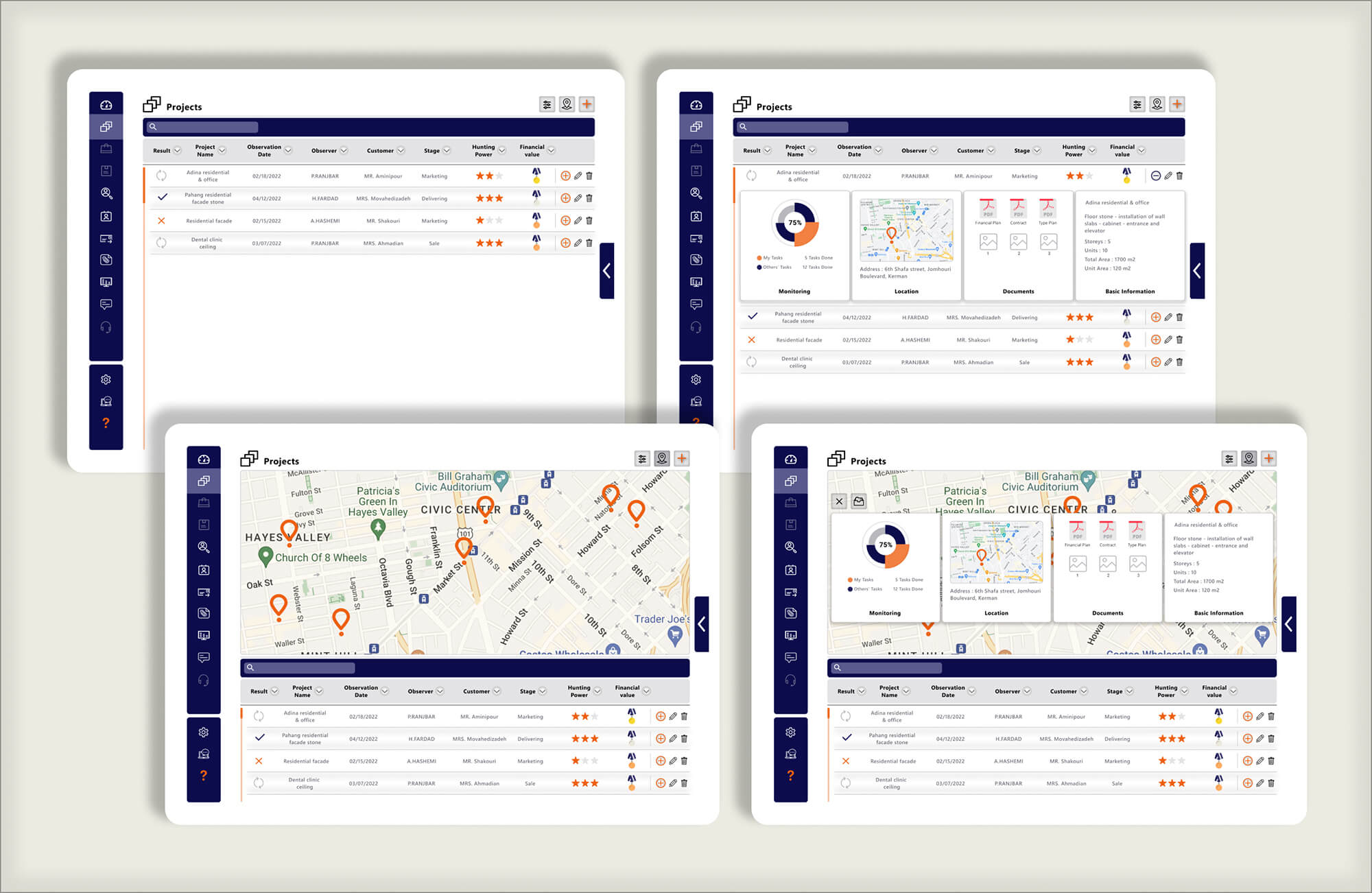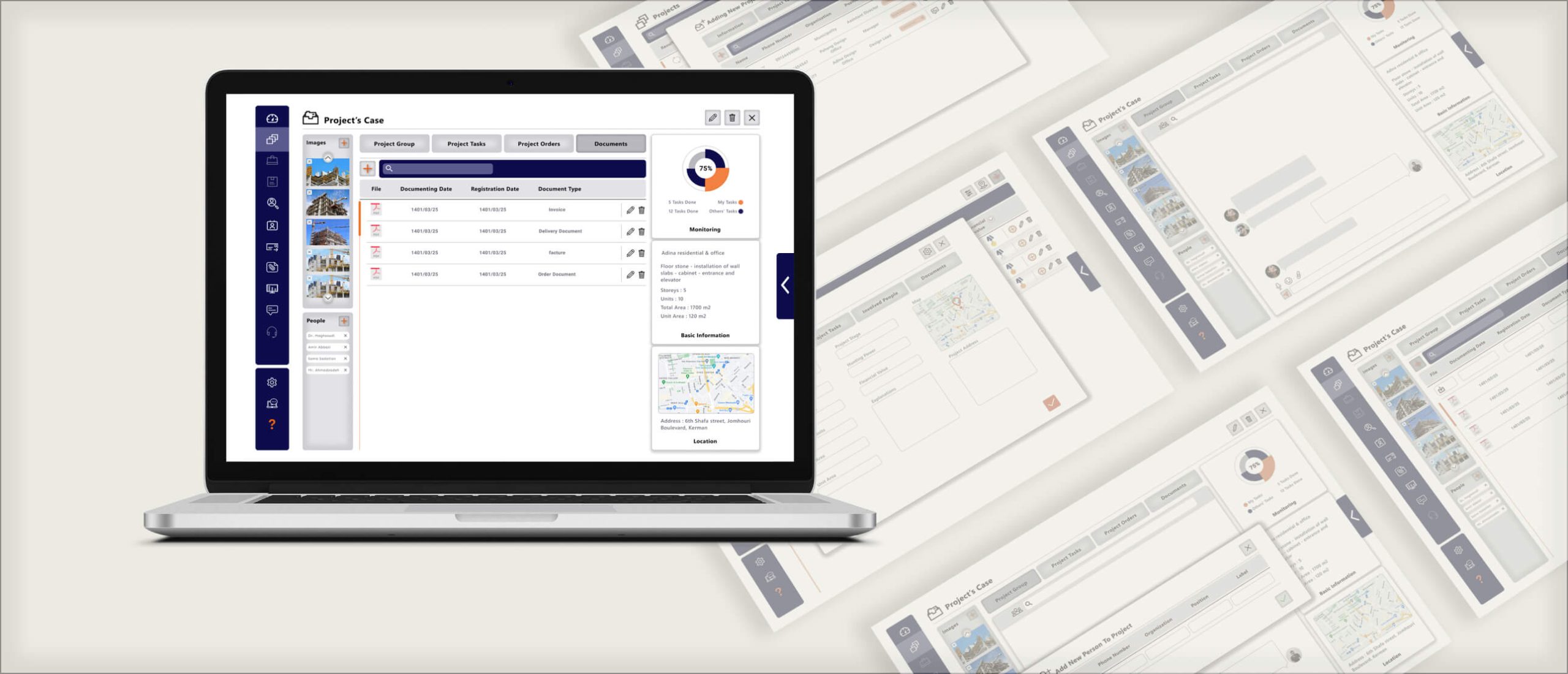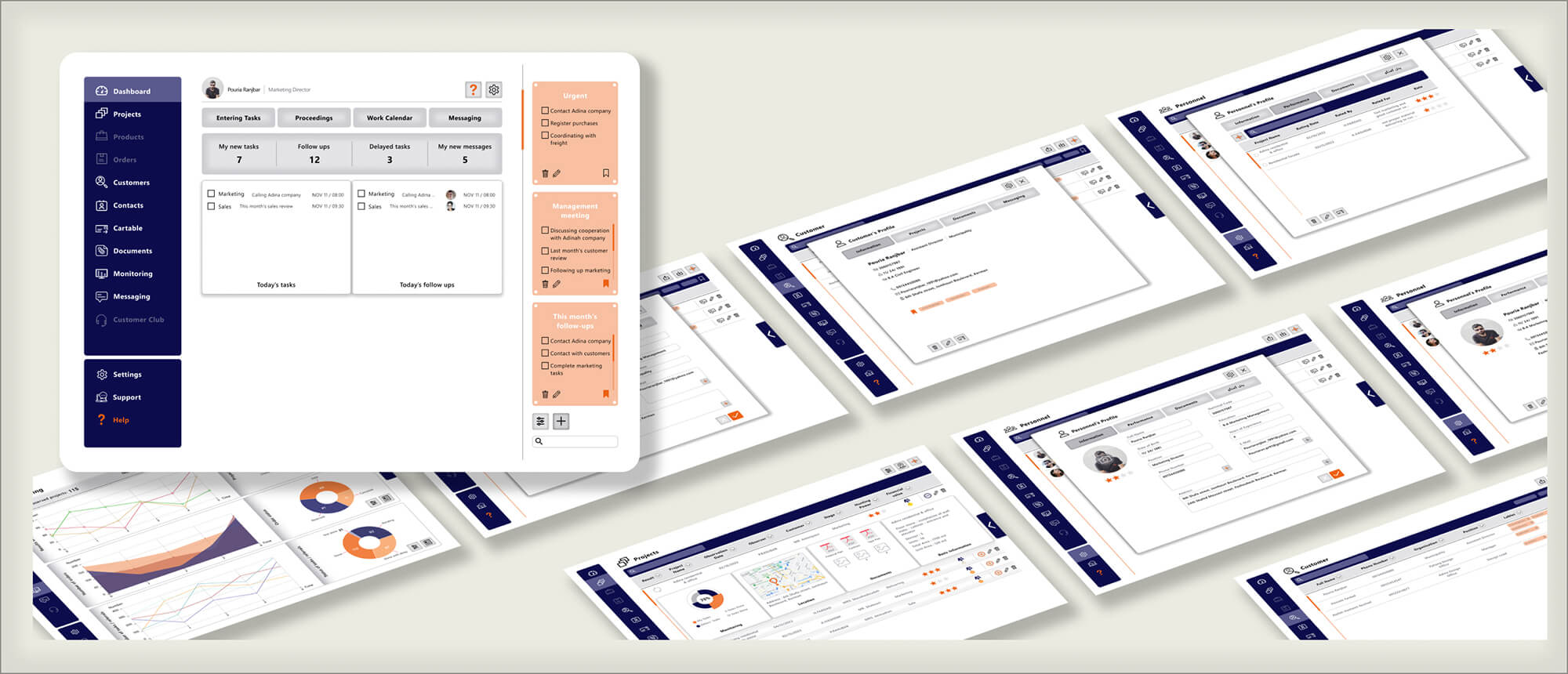
KARMAN
Evolving a marketing management service
A platform for empowering architecture and construction SMEs which was redesigned to improve upon automating sales, marketing, and customer relationship management through a social network.

Notes – Clear and easily operated notebook helps users to access and organize tasks efficiently.
Background – The existing system already possesses features and solutions intended for managing the marketing and sales team, as well as functionality for entering project data and establishing marketing targets for each project. However, it has been deemed necessary to review and redesign this system to enhance its revenue and impact within the competitive market of business management products.
The initial version of this product, which was launched as a Minimum Viable Product (MVP), now requires conversion into a Minimum Lovable Product (MLP). Consequently, adjustments must be made to various aspects, including experience strategies, user flow, and user interface, in order to achieve this transformation.
- Firstly, some platforms were excessively complex or overly simplistic. They proved either too intricate, requiring extensive training for all employees within an organization to effectively utilize them, or too simplistic, lacking essential features necessary for efficient management.
- Secondly, none of these products, even with customization, adequately catered to the specific needs of marketing and sales management within the architecture and construction industry. They failed to fully address the unique requirements of enterprises operating in this field.


Approach – Focusing on usability
The primary focus of this project was to enhance the ease and efficiency of sales and marketing management, catering to target users who required a fast and user-friendly method to record and track tasks and projects.
Since learnability was considered as a competitive advantage for this product, the product owner wanted me to put a large part of my focus on designing an easy-to-learn platform with high efficiency and minimum errors. Therefore, the best way to achieve these goals was to conduct frequent usability tests.
The tests were conducted moderated and in-person. My initial scenarios in usability tests centered around key user flows such as new customer registration, project registration, project monitoring and entering daily tasks. Utilizing insights gained from the research phase, I developed sketches and wireframes, which were then presented to users to execute the specified scenarios. Their feedback and perspectives were instrumental in refining and redesigning the product


Projects case – Establishing new user flow and redesigning user interface
Discover & Define – To initiate research, meetings were held with the product owner and marketing team to understand their marketing plans and desired product iterations. After consulting with the product’s marketing manager, we decided to start research phase by interviewing target users, asking them to participate in a comparative usability test.
This helped us at the very beginning of this project to get a clearer view of the users’ pain points as well as their feelings and behavior while working with different products we identified as competitors.
To conduct the tests, we selected 10 people who worked in the field of construction and architecture and tried to choose these 10 people from various age groups (between 28 and 40 years old) and various job titles (from company manager to marketing agent) because we wanted to check various views before starting to redesign and get a more comprehensive insight of the users’ pain points. Valuable insights were gained, leading to key areas for improvement:
- Creating a feature for quick and easy access to tasks and work information, facilitating accurate recording and classification
- Implementing significant changes in the personnel and customer aspects of the product
- Completing and redesigning the Projects section, incorporating precise project definition and classification features specific to construction projects
- Defining projects based on marketing and financial capabilities, with an emphasis on efficient search and quick access
- Enabling seamless and rapid communication with customers via the social network platform integrated into the product


Final Design – First Part



